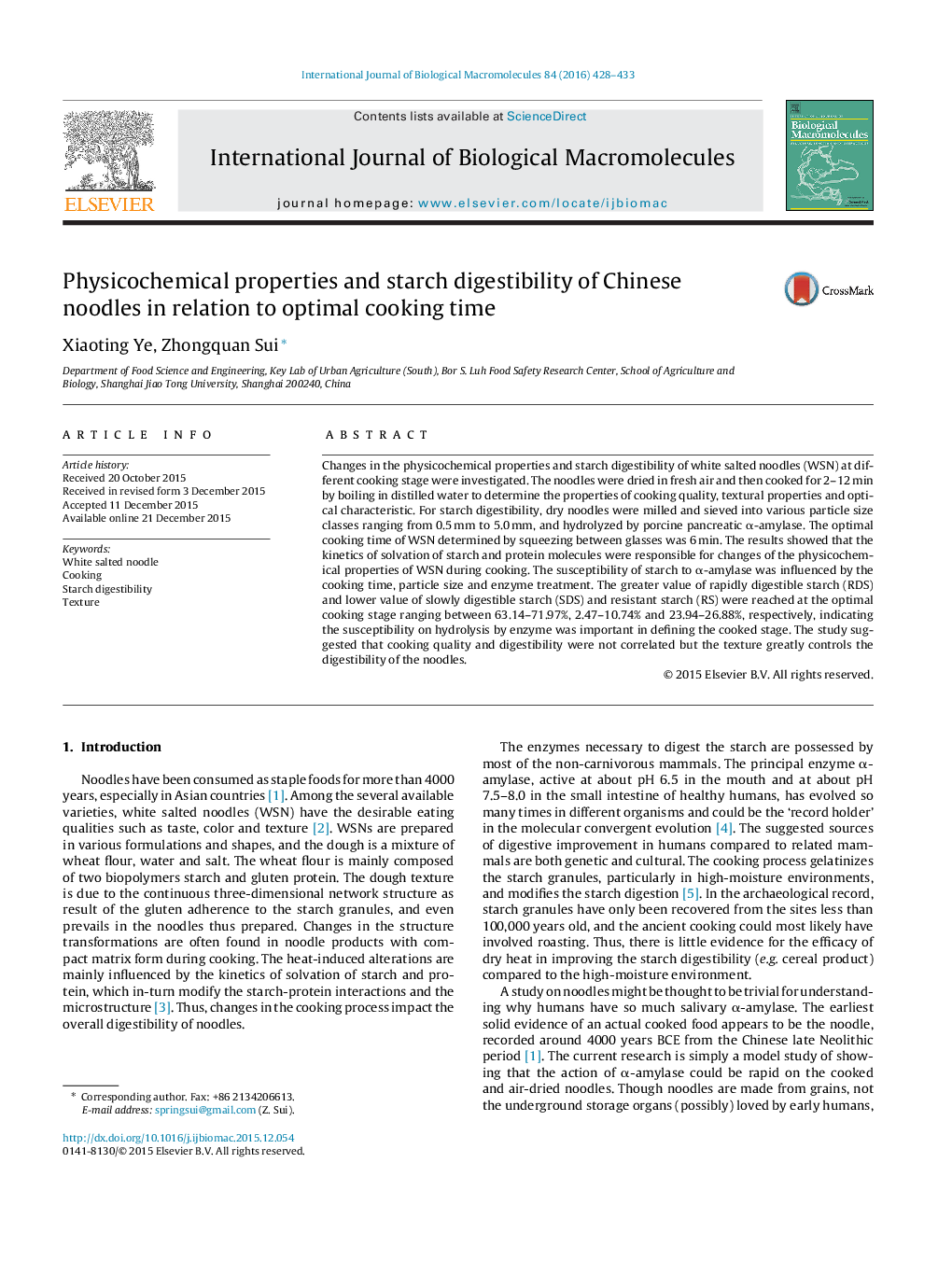| Article ID | Journal | Published Year | Pages | File Type |
|---|---|---|---|---|
| 1986027 | International Journal of Biological Macromolecules | 2016 | 6 Pages |
Changes in the physicochemical properties and starch digestibility of white salted noodles (WSN) at different cooking stage were investigated. The noodles were dried in fresh air and then cooked for 2–12 min by boiling in distilled water to determine the properties of cooking quality, textural properties and optical characteristic. For starch digestibility, dry noodles were milled and sieved into various particle size classes ranging from 0.5 mm to 5.0 mm, and hydrolyzed by porcine pancreatic α-amylase. The optimal cooking time of WSN determined by squeezing between glasses was 6 min. The results showed that the kinetics of solvation of starch and protein molecules were responsible for changes of the physicochemical properties of WSN during cooking. The susceptibility of starch to α-amylase was influenced by the cooking time, particle size and enzyme treatment. The greater value of rapidly digestible starch (RDS) and lower value of slowly digestible starch (SDS) and resistant starch (RS) were reached at the optimal cooking stage ranging between 63.14–71.97%, 2.47–10.74% and 23.94–26.88%, respectively, indicating the susceptibility on hydrolysis by enzyme was important in defining the cooked stage. The study suggested that cooking quality and digestibility were not correlated but the texture greatly controls the digestibility of the noodles.
